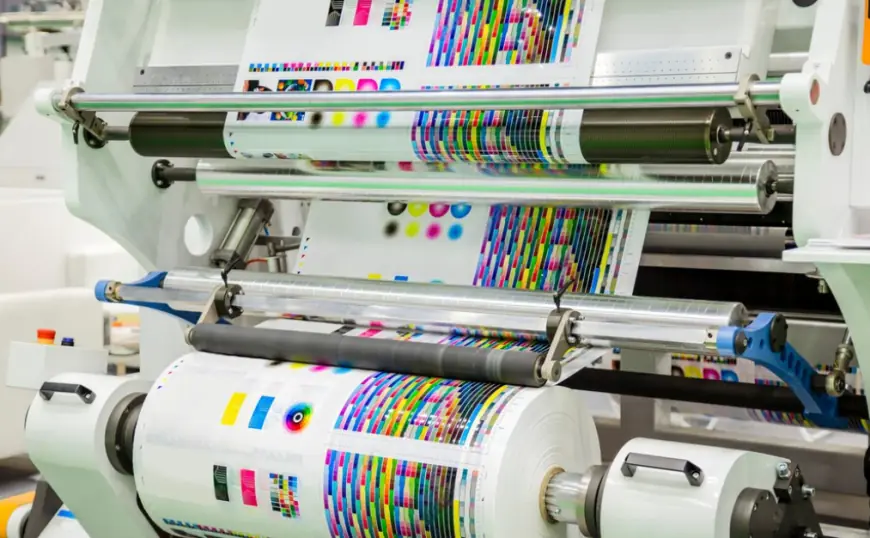Understanding Offset Printing Machines: Working, Benefits, and Applications

Offset printing is one of the most widely used printing techniques in the industry, known for its high-quality output and cost-effectiveness for bulk printing. Whether it’s newspapers, magazines, brochures, or packaging, an Offset Printing Machine plays a crucial role in producing sharp and vibrant prints. Among these, the Mini Offset Printing Machine has gained popularity due to its compact design and efficiency for small-scale printing needs.
What is an Offset Printing Machine?
An Offset Printing Machine is a type of printing press that transfers ink from a plate to a rubber blanket and then onto the printing surface. This indirect printing method ensures precision, durability, and high-quality image reproduction. Offset printing is especially effective for large-volume printing, providing consistent results with minimal cost per print. Compared to digital printing, offset printing offers better color accuracy, sharpness, and a wider range of printable surfaces, making it a preferred choice for professional printing requirements.
Working of an Offset Printing Machine
The working of an Offset Printing Machine involves several steps:
- Pre-Press Process: The design is prepared and transferred onto aluminum plates. This step includes typesetting, color separation, and plate making.
- Ink Application: Ink and water are applied to the plates, ensuring that only the image areas hold the ink while the non-image areas repel it.
- Offset Transfer: The inked image is transferred to a rubber blanket, which ensures smooth and even ink distribution before it reaches the final printing surface.
- Final Print: The final output is obtained on paper or another material, producing a clean and crisp print. The drying and finishing process follows to enhance durability and appearance.
Mini Offset Printing Machine: A Compact Solution
A Mini Offset Printing Machine is a smaller version of traditional offset printers, designed for businesses that require high-quality printing in limited space. It offers numerous advantages, such as:
- Cost-effectiveness: Ideal for short-run printing without compromising quality, reducing overhead costs and waste.
- Compact Size: Requires less space compared to large-scale offset printers, making it ideal for small offices and home-based businesses.
- Versatility: Suitable for printing letterheads, envelopes, pamphlets, business cards, wedding invitations, and small brochures.
- Efficiency: Provides quick and accurate prints with minimal maintenance, ensuring smooth workflow and high productivity.
- User-Friendly: Easier to operate than large-scale offset presses, making it accessible for beginners and small-scale operators.
Benefits of Using a Mini Offset Printing Machine
Investing in a Mini Offset printer brings various benefits, including:
- High-Quality Output: Produces sharp and detailed prints with excellent color consistency, ensuring professional-looking results.
- Economical for Small Businesses: Reduces printing costs for startups and local printing shops by offering affordable printing solutions.
- Eco-Friendly: Uses less ink and paper waste compared to other printing methods, contributing to sustainable business practices.
- Durability: Can handle multiple printing tasks efficiently with long-lasting performance, reducing the need for frequent replacements.
- Speed and Reliability: Capable of handling urgent printing jobs with quick turnaround times, making it suitable for time-sensitive projects.
Applications of Offset Printing Machines
Offset printing is widely used in different industries for various purposes:
- Publishing Industry: Printing newspapers, books, and magazines with high readability and color accuracy.
- Packaging Industry: Producing high-quality product packaging, labels, cartons, and flexible packaging materials.
- Corporate Sector: Printing brochures, catalogs, business cards, company reports, and marketing materials with a polished look.
- Advertising: Creating posters, flyers, promotional materials, and banners with vivid imagery and crisp details.
- Educational Sector: Printing textbooks, workbooks, and study materials for schools, colleges, and training institutes.
- Government and Public Sector: Used for printing official documents, forms, stamps, and certificates with security features.
Conclusion
The Offset Printing Machine remains a dominant force in the printing industry due to its precision, efficiency, and cost-effectiveness. It is an essential tool for businesses requiring high-quality prints at an economical rate. For small and medium-scale printing businesses, a Mini Offset Printing Machine is a game-changer, providing high-quality prints with a lower investment while maintaining professional standards. Whether for commercial printing, advertising, education, or corporate needs, offset printing continues to be the preferred choice for producing professional-grade materials. Its reliability, versatility, and sustainability make it an indispensable asset in the modern printing industry.












